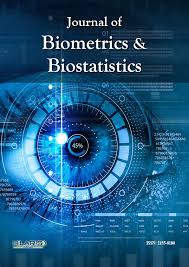Ph.D. in Biometrics and Biostatistics: Introduction, Admission, Registration, Eligibility, Duration, Fees, Syllabus 2024

Introduction:
A Ph.D. in Biometrics and Biostatistics offers a compelling blend of statistical methods with biological data analysis, providing a robust foundation for advancing technology and science. This degree equips students with the expertise to develop sophisticated models and tools necessary for significant innovations in fields ranging from healthcare to national security.
Admission Process:
- Submission of Application: Include a comprehensive application package with academic transcripts, a statement of purpose, and a research proposal.
- Entrance Exams: Complete required standardized tests such as the GRE, with a focus on quantitative scores.
- Recommendation Letters: Submit letters from academic or professional mentors.
- Interview: Participate in interviews that gauge interest, knowledge, and commitment to the field.
- Research Proposal Presentation: Present a detailed research proposal to potential advisors or department panels.
- Background Check: Some programs require a background check, especially those with a focus on security.
Eligibility Criteria:
- Master’s Degree: Possession of a Master’s degree in a related field like statistics, computer science, or biology.
- Quantitative Skills: Strong background in mathematics and statistical analysis.
- Research Experience: Demonstrated experience in research, ideally published work or active participation in relevant projects.
- Technical Proficiency: Skills in programming languages commonly used in biostatistics and biometrics, such as Python or R.
- Analytical Skills: Ability to think critically and solve complex problems.
- Communication Skills: Strong written and oral communication skills, crucial for disseminating research findings.
Completion Time:
Typically, completing a Ph.D. in Biometrics and Biostatistics takes 4-6 years, depending on the research area, student’s commitment, and program structure.
Career Opportunities:
- Clinical Biostatistician: Design and analyze clinical trials for new medical treatments.
- Genetic Data Analyst: Work with genetic data to uncover relationships between genetic markers and diseases.
- Forensic Analyst: Apply biometric data to support law enforcement.
- Epidemiologist: Utilize biostatistics to track and predict health trends in populations.
- Research Scientist in Government or Industry: Conduct research to improve or innovate new biometric and statistical methods.
- Academic Faculty: Teach and guide new students while conducting personal research.
Syllabus:
- Advanced Statistical Theory: Study high-level statistical methodologies and their applications.
- Computational Biostatistics: Learn computational techniques and software for biostatistical analysis.
- Ethical and Legal Aspects of Biometrics: Explore the ethical, privacy, and legal implications of biometrics.
- Machine Learning Applications: Apply machine learning algorithms in biometric and biostatistical contexts.
- Epidemiological Methods: Understand the statistical methods used in the study of disease in populations.
- Data Management and Security: Learn how to securely manage and analyze large datasets.
Internship Opportunities:
- Pharmaceutical Companies: Apply biostatistics in drug development and trials.
- Biotechnology Firms: Work on genetic data analysis and modification.
- Public Health Agencies: Assist in the analysis of population health data.
- Technology Companies: Develop new software tools for biometric analysis.
- Research Laboratories: Participate in cutting-edge biometric and biostatistical research.
Scholarships and Grants:
- Research Grants: Funding from government bodies for specific research projects.
- Academic Scholarships: Merit-based awards from universities or private foundations.
- Conference Sponsorships: Support to present research findings at international conferences.
- Diversity Grants: Grants aimed at promoting diversity within the field.
- Corporate Fellowships: Corporate-sponsored opportunities focused on applied research.
FAQs:
What is the difference between biometrics and biostatistics?
Biometrics involves the statistical analysis of biological data, while biostatistics is a branch of statistics that deals specifically with biological and health-related processes.
What skills are most important for success in this Ph.D. program?
Critical statistical analysis, proficiency in programming, and a strong grasp of biological and medical knowledge are essential.
How can I finance my Ph.D.?
Explore options like teaching assistantships, research assistantships, scholarships, and external funding from research grants.
What are the post-Ph.D. certification or licensing requirements?
Depending on your career path, certifications such as Certified Biostatistician or specific credentials related to biometric technologies might be required.
What is the job market outlook for graduates?
The job market is very favorable, with high demand in both public and private sectors for expertise in biometrics and biostatistics.
Can this degree be pursued part-time?
While challenging, some institutions may offer part-time Ph.D. programs, especially for students working in related fields.




